

How Often Test Smoke Alarms – When it comes to health and safety in the home and a business, smoke alarms are an unsung hero, quietly standing guard to protect you and your loved ones. These critical devices provide a life-saving alert at the first hint of danger, giving homeowners precious moments to escape and prevent devastating losses. However, understanding how often to test smoke alarms and ensuring proper installation and maintenance is crucial to harnessing their protective power.
In this article, you will learn about the British Standard regulation stipulating that your smoke alarm system should be fully tested monthly. It also covers further aspects of smoke alarm management, from choosing the right alarm to testing and maintaining it so your home remains safe and avoids accidental fires and the stress of filing a fire damage insurance claim.
Fast Facts:
According to the British Standard BS 5839-62019, a full test of the smoke alarm system is recommended once a month.
Smoke alarms should be tested regularly to ensure they are functioning properly and can alert you in case of a fire.
By following these guidelines and testing your smoke alarms regularly, you can help ensure your home’s and its occupants’ safety in the event of a fire.
Selecting the appropriate smoke alarm is fundamental to ensuring optimal protection for your home. There are primarily three types of smoke alarms available:
When selecting a smoke alarm, consider the specific needs of your home environment. For example, kitchen areas might benefit more from photoelectric alarms to reduce false alarms from cooking, while dual-sensor alarms could best serve bedrooms and living spaces.
Several alternatives are available for individuals who are hard of hearing or have other special requirements. Look for smoke alarms with strobe light alarms or vibrating pads that can be placed under the pillow to ensure everyone in your household is alerted to danger, regardless of their sensory abilities.
Read about how to get rid of the smell of smoke after a fire.
What Oakleafe Clients Say:


Proper installation of your smoke alarm is critical to its functionality. Follow these guidelines to ensure effective placement:
Regular testing and maintenance are crucial to the reliable performance of smoke alarms. A simple monthly test can be performed by pressing the test button on the device to ensure it is working correctly. In addition, consider the following maintenance routine:
Experts recommend testing smoke alarms at least once a month to guarantee their operational status. Additionally, undertaking a more thorough check annually, replacing batteries, and cleaning the unit, as mentioned, will help maintain its functionality.
Smoke alarms do not last forever. They should be replaced every 10 years or as indicated by the manufacturer. Signs that you may need a replacement include consistent chirping even after battery changes, failure to test correctly, or a visibly damaged device.
While smoke alarms provide essential alerts to fire, complementing them with carbon monoxide detectors and fire extinguishers adds an extra layer of safety to your home. Ensure you have a fire safety plan in place, practice it regularly with all household members, and equip your home with fire extinguishers suitable for all types of home fires.
Understanding the ins and outs of smoke alarm selection, installation, testing, and maintenance is crucial for home safety. Regular adherence to the testing schedule and proactive replacement can ensure that your smoke alarms remain in perfect working order, ready to protect you and your loved ones in the event of a fire. Remember, investing time in maintaining your smoke alarms is an investment in your safety and peace of mind.
Oakleafe Claims have represented policyholders and managed their insurance claims since before the First World War. We have vast expertise and experience in both domestic and commercial fire insurance claims with thousands of satisfied policyholders who have received their deserved insurance settlement.
What Oakleafe Clients Say:



Please complete the form and one of our insurance claim professionals will call you back ASAP